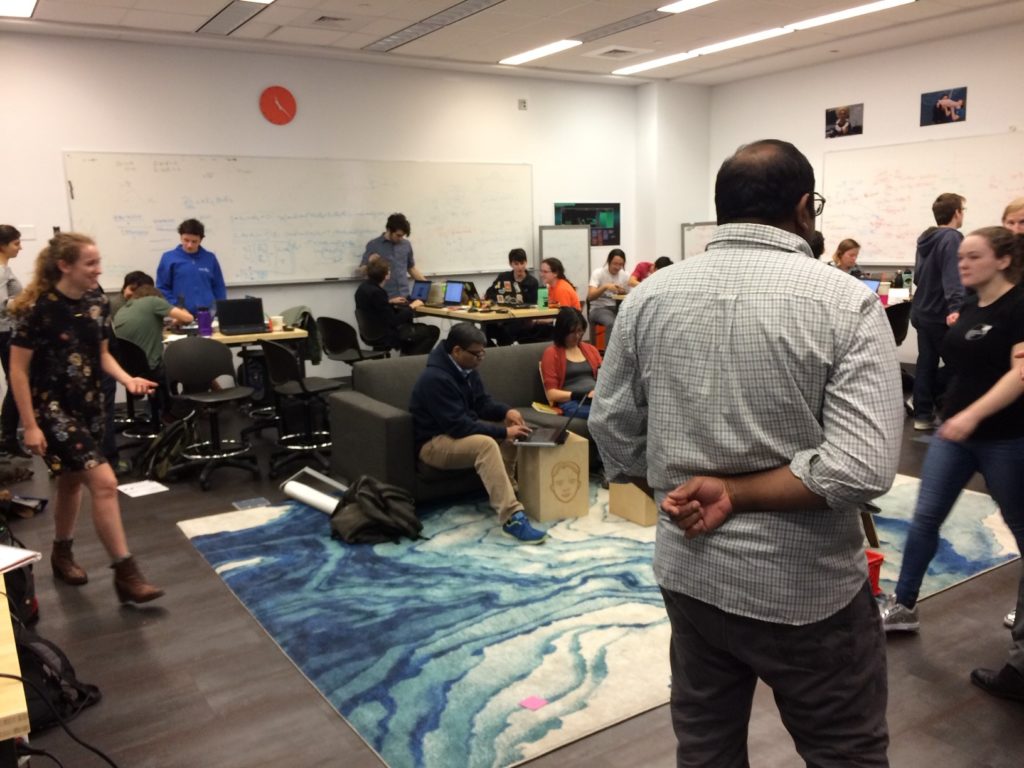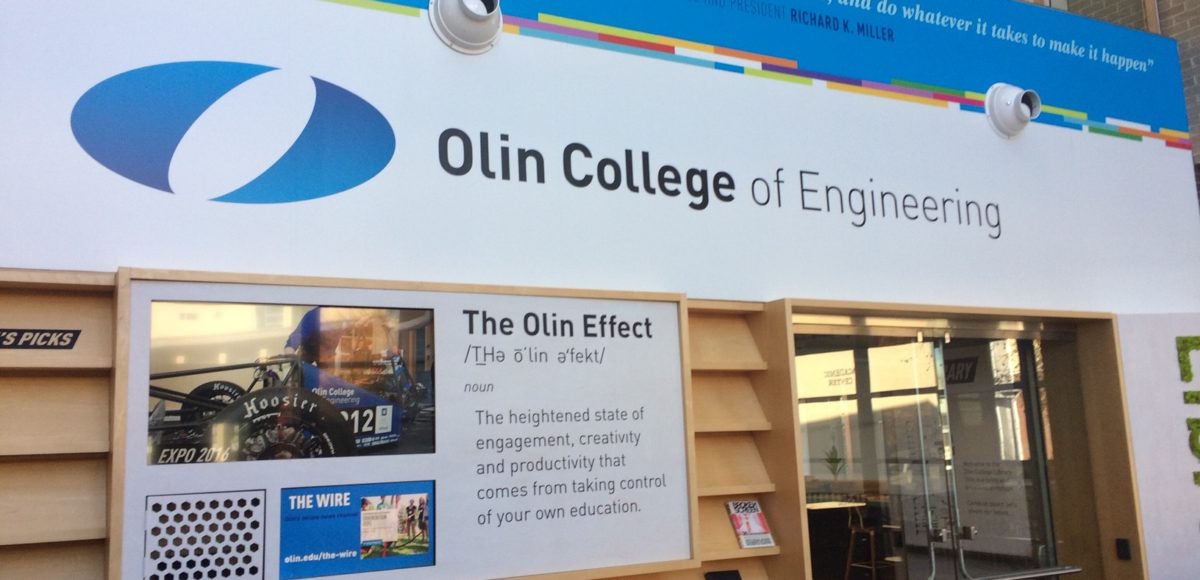It has long been said that travel broadens the mind. In university life travel enables us to seek out and meet people who think differently from ourselves; who challenge and disrupt our settled view of how problems might be solved and who prompt us to think creatively about activities which for us have become routine.
This was my experience of travelling to visit Olin College of Engineering in November 2016, where I first encountered the idea of ‘Intrinsic Motivation’.
Olin is a private college situated in Needham, a leafy suburb of Boston Massachusetts. Founded in 1997 with an endowment of $460 million, it offers undergraduate engineering education to around 350 students. Fees are high – students receive financial support through a generous scholarship programme – and entry is competitive and highly selective. In these respects, it is a typical New England liberal arts colleges (Wellesley and Babson Colleges are near neighbours).
What sets Olin apart, however, is its vision to lead the “transformation of the undergraduate engineering learning experience”. To this end, it did away with traditional departmental organisational architecture. It experimented with a new curriculum, new teaching and new assessment methods which instead of being focussed around delivery (inputs) were organised around student learning (outputs).
And it innovated. And it took risks. And it pioneered.
Quantitative Engineering Analysis II
The most memorable part of my visit came when I was invited to observe a class in action.
Quantitative Engineering Analysis II, and the activities in it, were being facilitated by a team of staff including John Geddes, Professor of Applied Mathematics at Olin and an alumnus of Heriot-Watt.

The room hummed with activity. No bored faces. No mobile phones to distract from the task in hand. No chivvying of students by staff to stay ‘on task’. Students and staff – it was impossible to tell who fell into which category – were together creating solutions to challenging open-ended problems.
What I was observing was a pedagogical approach shaped by the insights of Intrinsic Motivation.
Intrinsic Motivation
Popularised by the author Daniel H Pink in a book entitled ‘Drive’ [1], Intrinsic Motivation challenges practices built on an understanding of human motivation in which human beings respond in predictable ways to external ‘carrot and stick’ type incentives. Within higher education, this manifests itself in penalising students for failure to engage with their education (e.g. penalties for late submission of coursework or lecture non-attendance) and rewards when they do (e.g. prizes and awards ceremonies to recognise good outcomes).
Intrinsic Motivation theory does not reject such incentives outright. It recognises their value in particular situations – typically in the completion of repetitive, routine tasks. The problem with carrots and sticks, however, is that they may in fact reduce motivation, diminish performance, crush creativity and crowd out good behaviour.
Instead the theory posits that better results may be achieved if one works with the behavioural ‘grain’ of human beings, recognising the importance of three elements:
- Autonomy – the desire to direct our own lives
- Mastery – the urge to make progress and get better at something that matters
- Purpose – the yearning to do what we do in the service of something larger than ourselves.
Intrinsic Motivation at Olin
Olin had deployed these insights in shaping their whole pedagogical approach; looking at learning through a behavioural lens.
So, whilst lectures still happened – they were regarded as an important source of external motivation – active learning of the type I observed in Quantitative Engineering Analysis II was the approach of choice. An approach in which Olin had carefully and deliberately contextualised the insights of Intrinsic Motivation.
Autonomy – whilst the importance of freedom and agency on the part of learners was recognised, Olin staff also understood that students required appropriate guidance in making their choices. There were constraints.
Mastery – importance was attached to the gaining of technical competence of a very high order through overcoming challenging intellectual obstacles.
Purpose – at Olin students are encouraged to see their educational activity not just as the means to an individual end, but a route through which they might contribute their time and wealth to support philanthropic endeavours of their choice i.e. something bigger than themselves or their immediate peer group.
Inspiring Learning
So could this sort of thinking and approach inform learning and teaching at Heriot-Watt? I think it could.
We know, instinctively, that we learn better when motivation comes from within.
We know that a (small) number of leading universities are now deploying the insights of Intrinsic Motivation to reshape their approach to education.
We have the opportunity to do the same through our new Learning and Teaching Strategy – Inspiring Learning. And to change our way of thinking about education, shifting our focus away from one in which there is a reliance on rewards and punishments (carrots and sticks) to one in which we genuinely inspire and engage our students in the exciting and rewarding process of learning.
Olin and Heriot-Watt are geographically and culturally miles apart. No matter. In this, I think we have much to learn from this pioneer in engineering education.
So it is important that we travel. And it is important that as we travel we encounter new people and new ideas.
The journalist Jonah Lehrer put it rather well:
“We travel because…distance and difference are the secret tonic of creativity. When we get home, home is still the same. But something in our mind has been changed, and that changes everything.”
Jonah Lehrer, Observer Travel, 14 March 2010.
Professor John Sawkins
Deputy Principal (Learning and Teaching)
[1] Pink, Daniel H. (2009) Drive, Publisher: Riverhead Books, New York.
